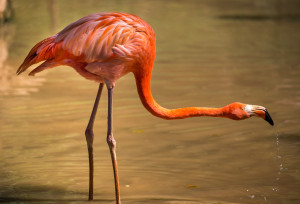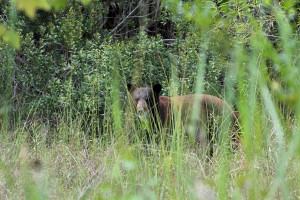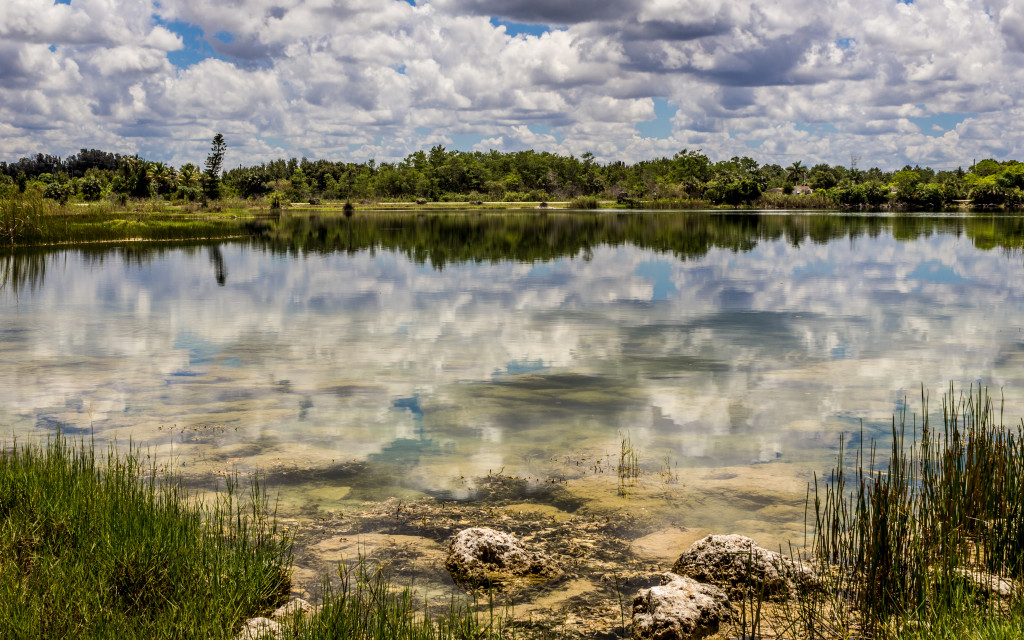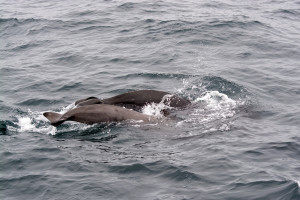 Recently American flamingos made a comeback to South Florida. While the wading bird no longer breeds in the Sunshine State, a population of flamingos returned to the Everglades after over a hundred years of no-shows. Last year, ornithologists counted an astounding 147 flamingos in just one area of the Everglades. They spotted the birds at Stormwater Treatment Area 2 (STA2) in Central Florida.
Recently American flamingos made a comeback to South Florida. While the wading bird no longer breeds in the Sunshine State, a population of flamingos returned to the Everglades after over a hundred years of no-shows. Last year, ornithologists counted an astounding 147 flamingos in just one area of the Everglades. They spotted the birds at Stormwater Treatment Area 2 (STA2) in Central Florida.
Back in the 19th century, hundreds of thousands of flamingos could be seen in parts of Southern Florida. But European settlers drove them away through excessive feather and egg collecting. Now, it appears, flamingos are returning to Florida from the Yucatan – or from zoos. It’s difficult to identify whether these birds are wild or captivity escapees, but researchers are attempting to tag the flamingos with satellite transmitters to learn more about their travel patterns.
While we don’t know exactly why flamingos returned to Florida or where they came from, we do know a lot about their habits. The tall, light-weight birds travel in large flocks and display unique social characteristics. For instance, the birds often mate for life. Even more amazingly, flamingos court one another in flocks. That’s right: an entire tribe of flamingos synchronizes its mating march. Often, each bird engages in “head flagging,” waving its head from side to side. Witnessing such a show can be just as comical as it is impressive.
In a flamingo family, the male and female share child rearing responsibilities. Both parties fashion a nest, incubate the egg and protect it from harm. Once hatched, adult flamingos feed their chicks “crop milk,” which is produced from the throats of both male and female birds. Chicks are born white or gray with straight beaks, and it takes one to two years for them to develop traditional flamingo characteristics like pink feathers and a curved beak.
Why are flamingos pink?
You may wonder why flamingos aren’t born with pink feathers. Well, their vibrant color is entirely attributed to their beta-Carotene diet, which contains a red-orange pigment. Because chicks don’t immediately dine on the crustaceans and plankton adult flamingos do, it takes them a couple years to glow pink. Without these beta-Carotene-rich meals, an adult flamingo’s feathers will turn white.
Why do flamingos stand on one leg?
While it’s not widely known why flamingos stand on one leg, some believe they do so to conserve body heat while resting. Another theory claims the pink birds simply take a one-legged stance for comfort. We hope it’s comfortable since flamingos will stand like this for hours at a time – quite the balancing act!
See flamingos in the Everglades
Flamingos often congregate on mudflats throughout the Everglades. The best way to spot one is by taking an airboat tour, which will expose you to a vast array of Everglades wilderness. To schedule your chance to see a flamingo, click here or contact Captain Mitch’s Everglades Airboat Tours at 239-695-3377.
 Did you know Florida is home to over 2,500 bears? The Florida Black Bear, the state’s only resident bear, is Florida’s largest land-based mammal. These gentle giants, ranging from 125-450 pounds, live in seven isolated subpopulations from the Panhandle down to the Everglades.
Did you know Florida is home to over 2,500 bears? The Florida Black Bear, the state’s only resident bear, is Florida’s largest land-based mammal. These gentle giants, ranging from 125-450 pounds, live in seven isolated subpopulations from the Panhandle down to the Everglades. Did you know the Everglades isn’t only protected by the United States? In addition to its national park status, it’s also internationally recognized as a highly important piece of land. Why? Well, the reasons are abundant, which is why the Everglades is designated not only as a national park but also as a biosphere reserve, a world heritage site and a wetland of international importance. In essence, the Everglades is a vital part of not just Southwest Florida or the United States, but of the world as a whole.
Did you know the Everglades isn’t only protected by the United States? In addition to its national park status, it’s also internationally recognized as a highly important piece of land. Why? Well, the reasons are abundant, which is why the Everglades is designated not only as a national park but also as a biosphere reserve, a world heritage site and a wetland of international importance. In essence, the Everglades is a vital part of not just Southwest Florida or the United States, but of the world as a whole. If you see short-finned pilot whales in the Everglades, your first thought is probably how majestic and beautiful they look. But your second realization should be how much danger they might be in. A couple of years ago, dozens of pilot whales died in the Everglades.
If you see short-finned pilot whales in the Everglades, your first thought is probably how majestic and beautiful they look. But your second realization should be how much danger they might be in. A couple of years ago, dozens of pilot whales died in the Everglades.





